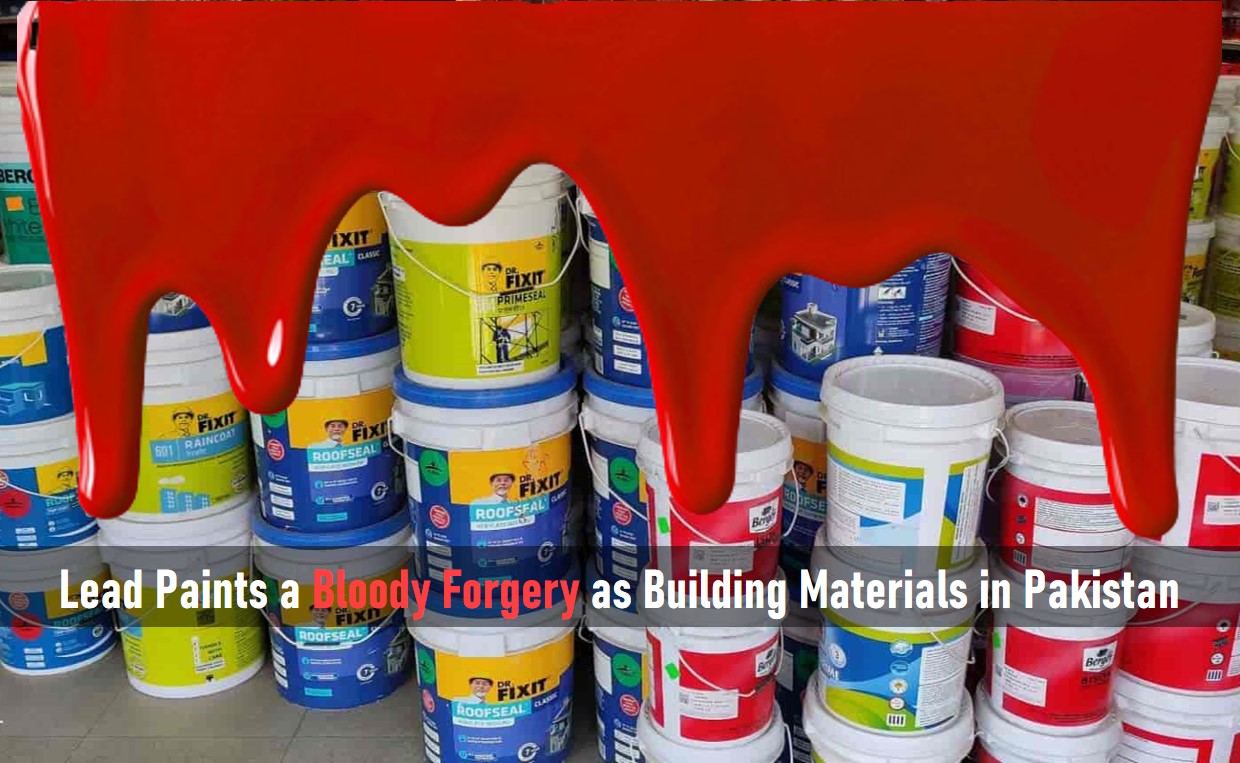Paints are essential building materials used in construction for coloring and coating. They having been traditionally used in some forms in houses and building structures for decorative and cultural reasons. Most paints are either oil-based or water-based and each has distinct characteristics. However, a latest research study has found 40% of oil-based paints in Pakistan containing dangerous and illegal levels of lead which is seriously endangering health of children.
The research was jointly carried out by doctors of Aga Khan University Karachi and experts from the Lead Exposure Elimination Project (LEEP). With a mission to eliminate childhood lead poisoning and improve the health of children worldwide the LEEP is an international NGO and a member of UN Environmental Program as well as WHO`s Global Alliance to Eliminate Lead Paint. It works with policymakers and industry to end the sale of lead paints across the world.
Toxicity of Lead in Paints
Paints are made through combining chemical products. These chemicals include solvents, binders, additives and pigments. However, in solvent-based paints use and exposure of lead is a health hazard, therefore, banned internationally way back in 1970s. But in Pakistan it is otherwise. Lead is a toxic substance that can affect people of any age, but especially harmful to children, pregnant women and unborn babies. It accumulates in your body, so even small amounts can pose a health hazard over time.
For manufacturers lead gives the paint its tint, while lead pigments are highly opaque so that a relatively small amount of the compound can cover a large area. However, safe alternative pigments are widely available, and many countries have successfully eliminated the use of lead in paint. But the recent research’ data has found high levels of lead in nine of the major paint brands and in eight smaller brands in Pakistan.

According to the US Environment Protection Agency, not only humans even soil, yards and playgrounds can become contaminated when exterior lead-based paint from houses or buildings gets into the soil. Soil may also be contaminated from past use of leaded gasoline in cars, from industrial sources, or even from contaminated sites, but is equally toxic and harmful. Lead in soil can be ingested as a result of hand-to-mouth activity that is common for young children and from eating vegetables that may have taken up lead from soil in the garden. Lead in soil may also be inhaled if suspended in the air or tracked into your house thereby spreading the contamination.
Health Risk
The The AKU and LEEP’s joint research report also says “Lead exposure has severe negative health impact on children, causing permanent damage to their cognitive development, stunted growth and anaemia. Lead poisoning from paint and other sources is estimated to affect 47 million children in Pakistan, costing the country $38 billion in lost earnings every year.”
A Pakistan Standards and Quality Control Authority official on the report says “The data in this study provides valuable guidance for our enforcement of the country’s compulsory lead paint standards, which exist to protect the masses from harm. We urge manufacturers to swiftly remove lead ingredients from their paint, and we will be taking steps to ensure compliance.” But the situation demands a complete and strict ban on use of lead while manufacturing paints.
By
Editorial, Infocus


